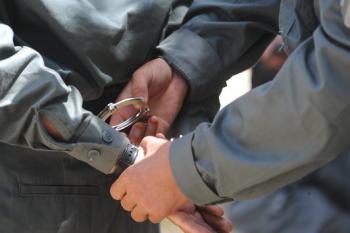History of the juvenile justice system
Historically, the law has defined a line between "juvenile" and "adult" offenders, but this line has changed and been drawn at many different places, for many different reasons.¹ The United States, early in history, was heavily influenced by English common law, which governed the American colonies.¹ William Blackstone, one of the most important English lawyers, identified people who were incapable of committing a crime. Blackstone outlined two things that were required to hold someone accountable for a crime¹:
- The person had to have "vicious will" (i.e., the intent to commit a crime);
- The person had to commit an unlawful act.
If either the will or the act was missing, no crime was committed. Blackstone identified two groups of people that were incapable of committing a crime: infants and individuals between the ages 7 and 14 (the "gray zone")¹. However, if this child appeared to understand the difference between right and wrong, the child could be convicted and suffer the full consequences of the crime.¹
A new system for dealing with justice for juveniles started to emerge in the 19th century. Reformers created special facilities for troubled youth, specifically in large cities.¹ These facilities aimed to protect juvenile offenders by separating them from the adult offenders that often would corrupt them. They also focused on rehabilitation. The first juvenile court in the U.S. was established in Illinois in 1899. Within 25 years, most states had a juvenile court system. The main focus has been rehabilitation, rather than punishment.¹ The system took on a "parental" role, with the intention of focusing on the best interests of the child. Emphasized was an informal, non-adversarial, and flexible approach to cases.¹
The juvenile justice system in America
The system in the U.S. operates under a different set of standards than the adult criminal justice system. The two methods are completely separated from one another, to ensure that a clear distinction is made between actions of minors and adults.² In addition to their past actions, minors are viewed through a different lens, in terms of their ability to be rehabilitated in the future. It is widely accepted that younger offenders have greater potential to change than adult offenders do.² However, juveniles can be transferred into adult court if the juvenile court waives or relinquishes its jurisdiction.
The juvenile justice system intervenes when crimes are committed by individuals under the age of 18, but often accommodate those up to the age of 21.² Rehabilitation is a central tenet of most views of juvenile justice, so reformers want to place greater responsibility on communities for support shaping juvenile outcomes.³
Congress passed the Juvenile Delinquency Prevention and Control Act in 1968, now called the Juvenile Delinquency Prevention Act (FJDA). The FJDA defines juvenile delinquency and sets forth rules.³
Image source: Eric Chan / flickr.com
References:
1. American Bar. Part 1: The History of Juvenile Justice. Retrieved May 2, 2014, from http://www.americanbar.org/content/dam/aba/migrated/publiced/features/DYJpart1.authcheckdam.pdf
2. Global Research. The Juvenile Justice System in America. Retrieved May 2, 2014, from http://www.globalresearch.ca/the-juvenile-justice-system-in-america/5374359
3. Cornell Law. Juvenile Justice: An Overview. Retrieved May 2, 2014, from http://www.law.cornell.edu/wex/juvenile_justice
© BrainMass Inc. brainmass.com July 26, 2024, 4:37 am ad1c9bdddf



